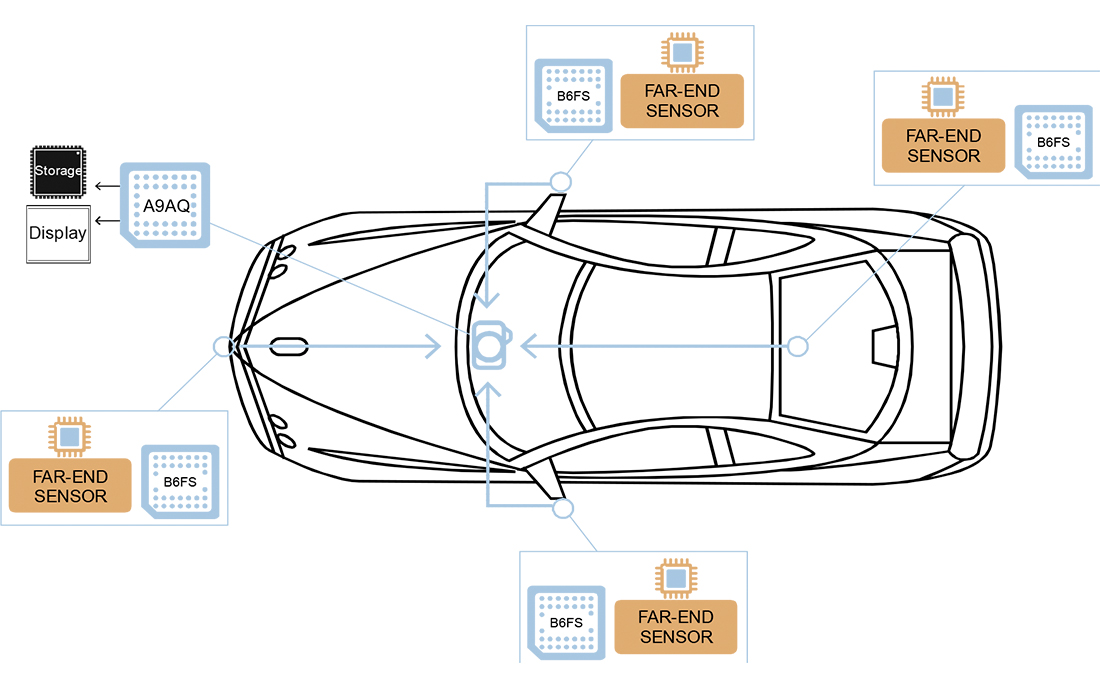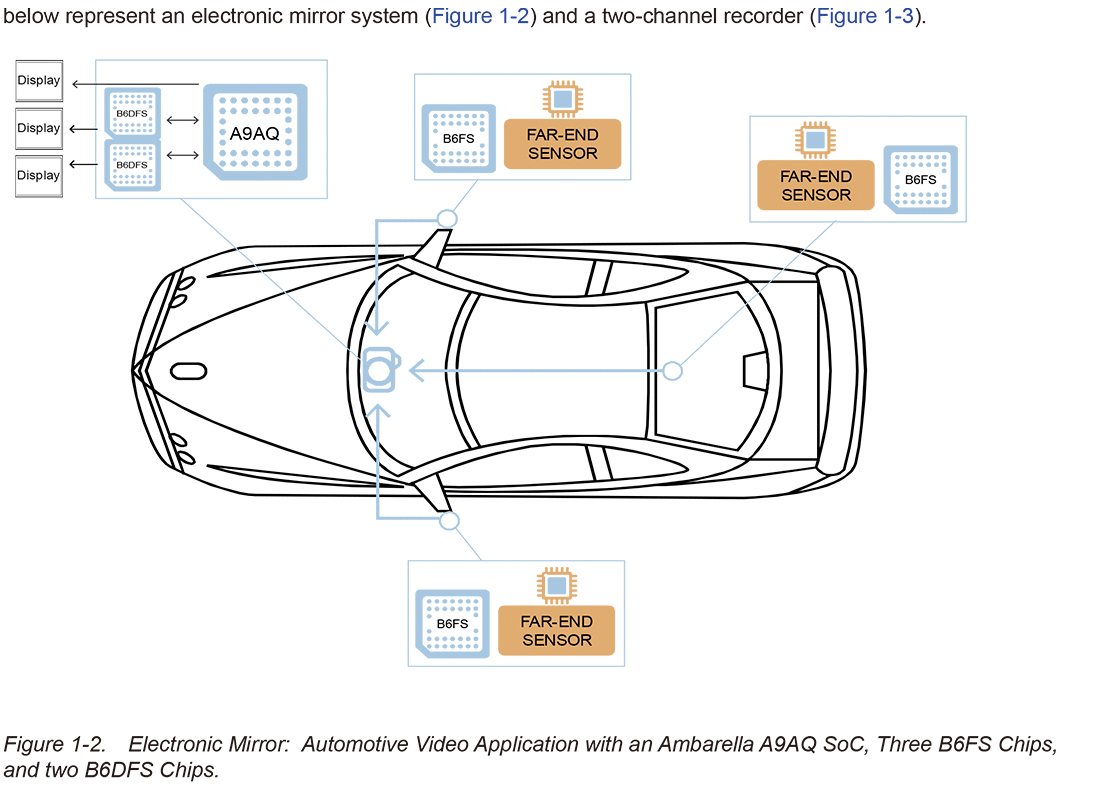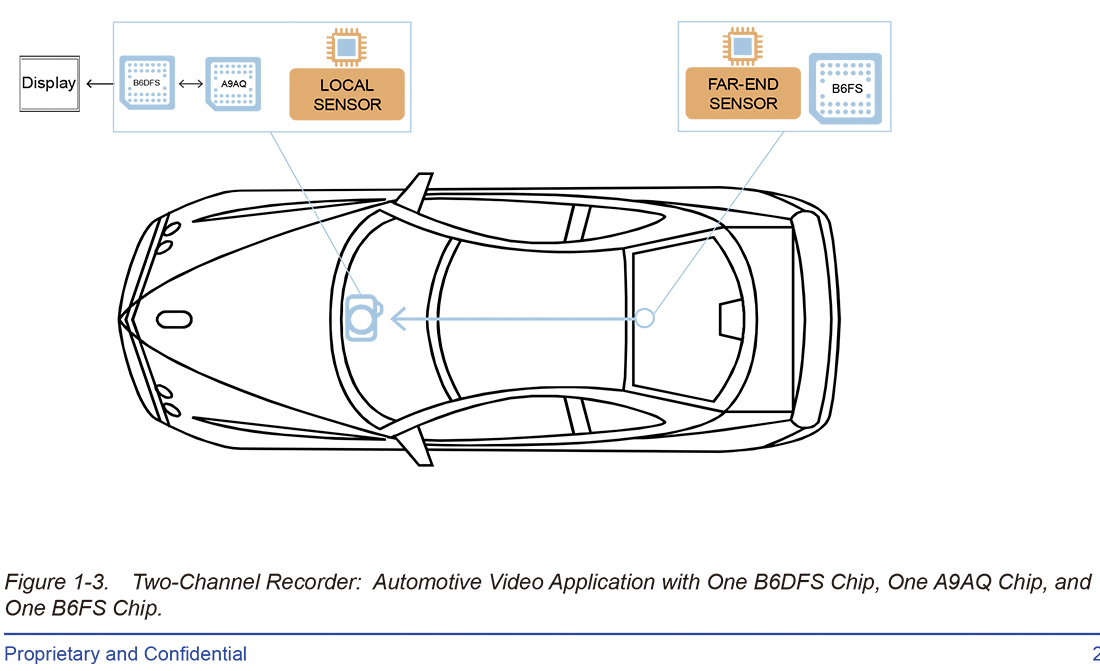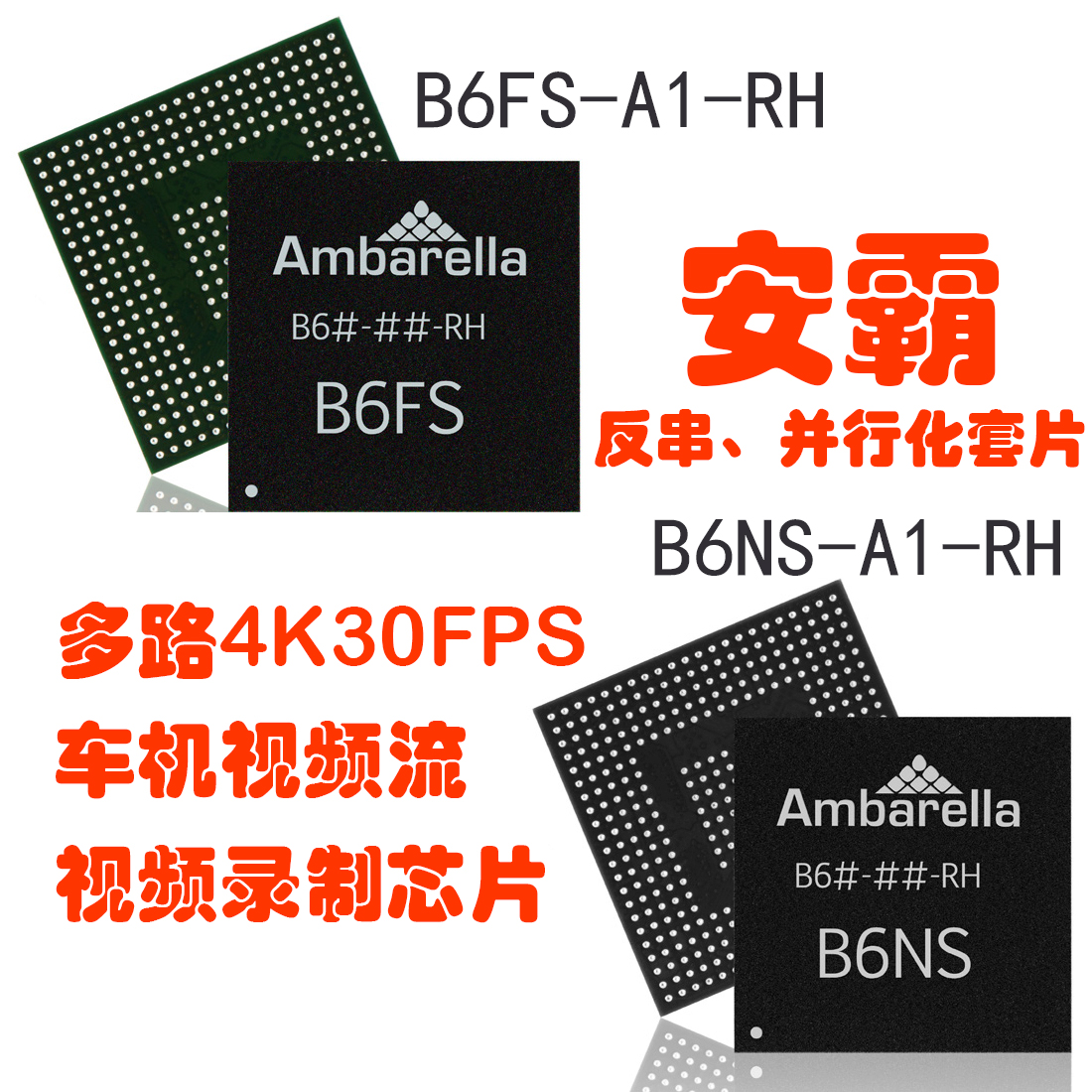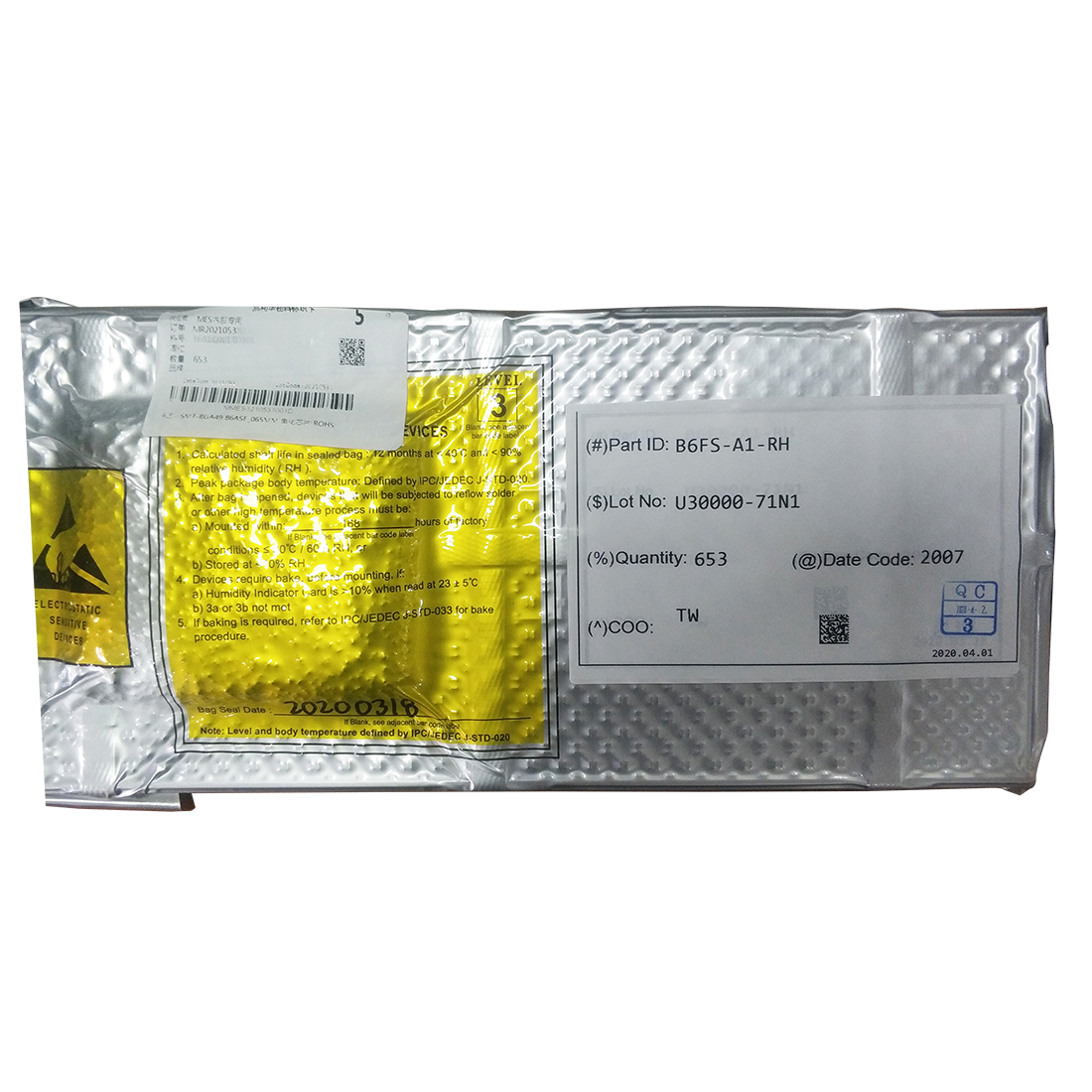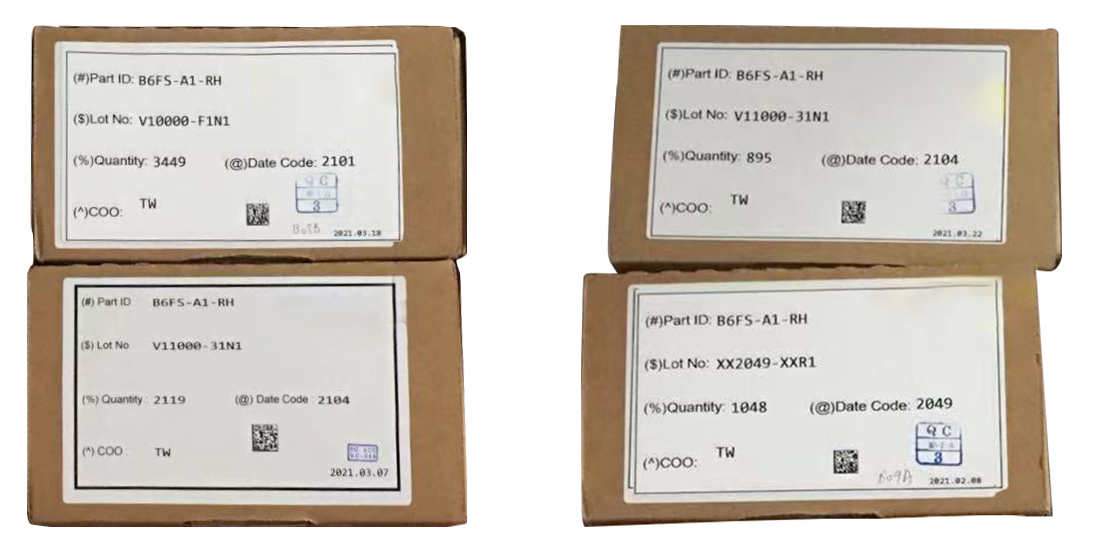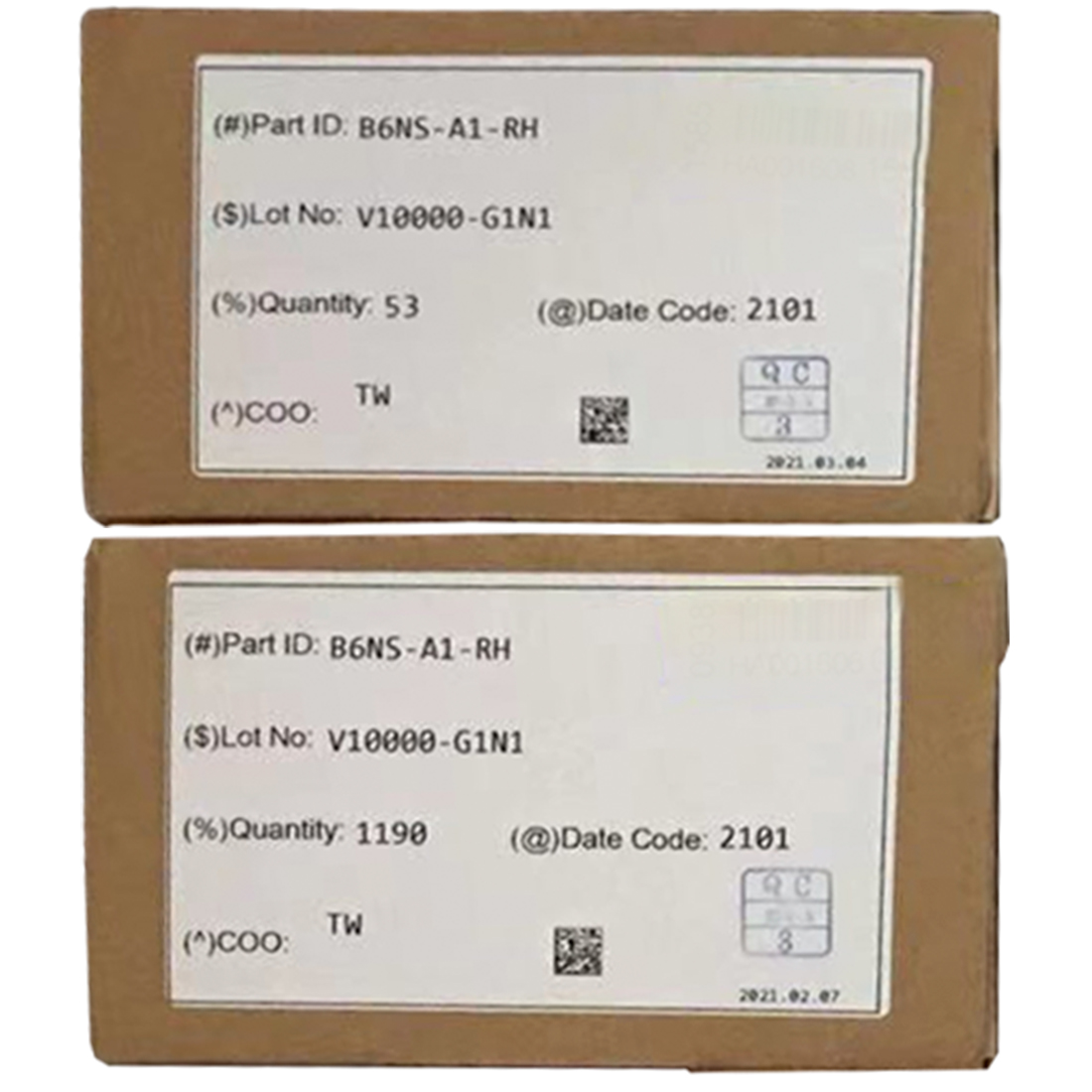B6NS双通道反串行化芯片接收来自B6FS串行化套片Ambarella安霸汽车机用高性能HD,4K30FPS无延迟多视频流处理视频录制处理器
2021-06-03 02:45:15
点击购买
B6NS De-Serializer(串行并行转换器) Chip ,B6FS Serializer串行化 Chip Datasheet
B6NS概要描述
高性能的Ambarella B6配套芯片能够通过同轴电缆从远程摄像机模块传输高清和4K视频,而不会出现延迟或视频质量损失。B6系列芯片支持广泛的汽车摄像头应用,包括周边视图、电子后视镜、ADAS和多通道视频录制。
Ambarella B6NS双通道反串行化芯片接收来自B6FS串行化Serializer芯片(把并行数据变成串行数据的寄存器)或CMOS传感器的一个或两个视频流,然后通过SlVS接口输出组合视频到Ambarella SoC。
B6NS关键特性
※ 支持最多两个通道的序列化-去序列化(SERDES)输入
※ 支持每输入4Kp30fps,或1080p60fps与HDR
※ 执行所有传感器同步任务
※ 用于编程传感器设置的反向通道通信。
※ 可编程视频压缩,降低视频数据率
※ 10个通用输入/输出(GPIO)引脚
※ 多比特纠错
※ 封装:49Pins,0.65毫米间距,BGA封装(5mm x 5mm)
B6NS 1. 概述
Ambarella的B6汽车反序列化芯片的数据表首先简要介绍了B6协处理器家族(1.1节),并总结了双通道能力的关键特性(1.2节)。第2章介绍了B6NS的模块和接口。引脚细节和电气特性分别参见第3章和第4章。参见第5章包装信息和第6章Ambarella联系和订购细节。
1.1 Ambarella介绍B6协处理器
Ambarella B6配套芯片支持高达4Kp30的多流视频捕获,用于高性能汽车应用,包括环绕视图、电子后视镜、ADAS和多通道视频录制。旨在支持复杂系统需要多个图像传感器部署在车辆、B6 co-proces-sors家族作为一种高效的数字信号处理器(DSP)之间的桥梁和四个图像传感器,允许360度覆盖没有引入延迟或视频质量的损失。此外,B6芯片使用简单的同轴电缆传输高分辨率Bayer RGB传感器数据。5x5mm b6家族由以下协处理器类型组成。
1. B6FS:(远端)B6FS串行化芯片捕获拜耳RGB传感器输入,作为远程定位传感器和B6NS协处理器(或A9AQ芯片)之间的桥梁。
2. B6NS:(近端)B6NS反序列化芯片结合1或2通道的视频流从B6FS,并通过MIpI-CSI或SlVS接口发送到一个Ambarella SoC。
3. B6DFS:(远端)B6DFS芯片将从A9AQ接收到的SERDES数据以MIpI-DSI或Open lDI格式传输到远程外部显示器。如图1-3所示。
注:
※ B6FS串行化芯片捕获拜耳RGB传感器输入,作为远程传感器和B6NS芯片(需要将SERDES流转换为MIpI-CSI或SlVS流)或A9AQ芯片(使用A9AQ时不需要B6NS)之间的桥梁。
※ 使用A9AQ输出一个或两个远程显示器时,需要B6DFS(远端)显示芯片。对于单个本地显示,不需要显示芯片。
※ 同轴电缆(最高10m)可用于连接远程摄像机/显示器使用B6 SERDES解决方案。在多通道用例中,如果在系统处于活动状态时电缆断开,特定的通道将被丢弃;而其余的系统操作将不会中断。
1.2 B6NS简介
B6NS反序列化芯片的特点如下:
◎ 数据路径
※ 序列化-反序列化(SERDES)输入模式:传感器→B6FS VIN→B6FS SERDES TX→b6ns serdes rx→b6ns mipi-csi
※ 合并模块重组SERDES数据到一个单独的视频通道
※ 支持高达4Kp30或1080p60视频分辨率
◎视频流输出(VOUT)模块
※ 支持两种输出模式:MIpI-CSI和SlVS
※ 灵活的反向通道通信
※ 可选择SSI/SpI或I2C/IDC接口
※ SSI/SpI或I2C/IDC传感器通信通过同轴电缆进行(即,不需要额外的控制线)
※ 支持多通道/传感器同步
※ 同轴电缆(最大10m)需要连接到B6FS
◎可编程视频解压缩器
◎10个通用输入/输出(GpIO)引脚
◎多比特纠错
◎ECC编码器和解码器
◎五个pll: Core, VOUT,Rx pHY, Tx0 pHY,和Tx1 pHY
◎49脚,0.65毫米间距BGA封装(5mm x 5mm)
◎工作温度范围:-20℃~ +85℃
2. 外围接口
2.1接口:概述
介绍B6NS外设接口的概要信息。本章的组织如下:
※ (第2.2节)输入接口
※ (章节2.3)视频输出(VOUT)接口
※ (第2.4节)IDCS桥接模块
※ (第2.5节)SSI主机接口
2.2输入界面
B6NS输入接口同时支持两个独立的输入实例,每个实例都有独立的编程和操作。
B6NS输入接口的特点如下所示。
※ 两个输入通道
◎Serializer-Deserializer (SERDES)输入模式:多达2车道SERDES输入从B6远端芯片
?高达4Kp30每输入
◎像素重排模块允许可编程测序YUV (Y, Cb, Cr)组件到所需的输出顺序。
?支持RGB格式包括
2.3视频输出(VOUT)接口
B6NS VOUT接口支持三种输出方式:MIpI- csi MIpI DSI、SlVS和Open lDI。和SlVS 2.4 IDCS桥模块
2.4 IDCS模块是I2C / IDC从机,作为B6NS内部总线和Ambarella DSp之间的桥梁。IDCS模块的特点包括:
◎三种操作模式:
※ 标准模式:高达100kb /s的数据传输速率
※ 快速模式:高达400kb /s的数据传输速率
※ 高速(Hs)模式:高达3.4 Mb/s的数据传输速率
◎最低时钟频率:标准模式下为1.34 MHz
2.5 SSI主机接口
B6NS芯片提供SSI主机接口模块,从接口接收来自芯片的命令,并将其转换为AHB主信号(数据路径为Ambarella SoC→B6NS SSI2 AHB接口→B6NS AHB总线→B6NS AHB外设)。SSI主机接口的功能包括:
◎支持8位数据帧
◎支持scph = 0,表示串行时钟在第一个数据位的中间切换,scpol = 0,表示低inactive状态。
B6NS De-Serializer Chip Datasheet
SUMMARY DESCRIPTION
The high-performance Ambarella B6 companion chips enable the transmission of HD and 4K video from remote camera modules via coaxial cables, without the introduction of latency or a loss of video quality. The B6 family of chips enables a wide range of automotive camera applications, including sur-round view, electronic mirrors, ADAS, and multi-channel video recording.
The Ambarella B6NS two-channel de-serializer chip receives one or two video streams from B6FS serializer chips or CMOS sensors, then outputs the combined video via an SlVS interface to an Ambarella SoC.
B6NS KEY FEATURES
※ Supports up to two channels of Serializer-Dese-rializer (SERDES) input
※ Supports up to 4Kp30 per input, or 1080p60 with HDR
※ performs all sensor synchronization tasks
※ Back-channel communication for programming sensor settings.
※ programmable video compression for reducing video data rate
※ 10 General purpose Input / Output (GpIO) pins
※ Multi-bit error correction
※ package:49pins, 0.65mm pitch BGA (5 mm x 5 mm)
1. B6NS OVERVIEW
This datasheet for the B6NS automotive de-serializer chip from Ambarella begins with a brief introduc-tion to the B6 family of co-processors (Section 1.1) and a summary of the key features of the two-channel-capable (Section 1.2). Chapter 2 describes the B6NS modules and interfaces. For pin details and electrical character-istics refer to Chapter 3 and Chapter 4, respectively. See Chapter 5 for package information and Chapter 6 for Ambarella contact and ordering details.
1.1 Introduction to B6 Co-Processors from Ambarella
Ambarella B6 companion chips enable multi-stream capture of up to 4Kp30 video for high-performance automo-tive applications including surround view, electronic mirrors, ADAS, and multi-channel video recording. Designed to support complex systems requiring multiple image sensors deployed over a vehicle, the B6 family of co-proces-sors serves as a highly efficient bridge between the digital signal processor (DSP) and up to four image sensors, allowing 360-degree coverage without the introduction of latency or a loss of video quality. Moreover, B6 chips
enable high-resolution Bayer RGB sensor data to be transferred using a simple coaxial cable. The 5x5-mm B6S
family is composed of the following co-processor types.
1. B6FS: (Far-end) The B6FS serializer chip captures Bayer RGB sensor input, serving as a bridge between a remotely-located sensor and a B6NS co-processor (or an A9AQ chip).
2. B6NS: (Near-end) The B6NS de-serializer chip combines the 1- or 2 channels of video stream from B6FS and sends it via MIpI-CSI or SlVS interface to an Ambarella SoC.
3. B6DFS: (Far-End) The B6DFS chip transfers the SERDES data received from A9AQ in MIpI-DSI or Open lDI format to connect to remote external displays. Refer to Figure 1-3 below.
Notes:
※ The B6FS serializer chip captures Bayer RGB sensor input, serving as a bridge between a remotely-located sensor and a B6NS chip (required to convert the SERDES stream into a MIpI-CSI or SlVS stream) or an A9AQ chip (B6NS is not required when using A9AQ).
※ B6DFS (far-end) display chip is required when outputting to one or two remote display using A9AQ. For a single local display, no display chips are required.
※ Coaxial cables (up to 10m) can be used to connect remote cameras/ displays using the B6 SERDES solution. In a multi-channel use case, if the cable is disconnected while the system is active, the specific channel will be dropped; while the rest of the system operation will not be disrupted.
1.2 B6N SIntroduction to the B6NS
Features of the B6NS de-serializer chip are as follows:
◎Data path
※ Serializer-Deserializer (SERDES) Input Mode: the Sensor → B6FS VIN → B6FS SERDES
TX→ B6NS SERDES RX → B6NS MIPI-CSI
※ The Merger Module reassembles SERDES data into a single video channel
※ Supports up to 4Kp30 or 1080p60 video resolution
◎ Video Stream Output (VOUT) Module.
※ Supports two output modes: MIpI-CSI and SlVS
※ Flexible back-channel communication
※ Selectable SSI/SpI or I2C/IDC interface
※ SSI/SpI or I2C/IDC sensor communications occur over the coaxial cable (i.e., no extra control wires required)
※ Supports multi-channel/sensor synchronization
※ Coaxial cable (up to 10 m) required for connection to B6FS
◎ programmable video decompressor
◎ 10 General purpose Input / Output (GpIO) pins
◎ Multi-bit error correction
◎ ECC encoder and decoder
◎ Five plls: Core, VOUT,Rx pHY, Tx0 pHY, and Tx1 pHY
◎ 49-pin, 0.65-mm pitch BGA package (5 mm x 5 mm)
◎ Operating temperature range: -20 C to +85 C
2. B6NS PERIPHERAL INTERFACES
2.1 Interfaces: Overview
This chapter provides summary information regarding the B6NS peripheral interfaces. The chapter is organized as follows:
※ (Section 2.2) Input Interface
※ (Section 2.3) Video Output (VOUT) Interface
※ (Section 2.4) IDCS Bridge Module
※ (Section 2.5) SSI Host Interface
2.2 B6NS Input Interface
The B6NS input interface supports two separate input instances simultaneously, each with independent program-ming and operation.
The features of the B6NS input interface are provided below.
◎ Two channels of input
◎ Serializer-Deserializer (SERDES) Input Mode: Up to 2-lane SERDES input from B6 far-side chips
※ Up to 4Kp30 per input
◎ pixel Reordering module allows programmable sequencing of the YUV (Y, Cb, Cr) components into the desired output order.
※ Support for RGB format included
2.3 B6NS Video Output (VOUT) Interface
The B6NS VOUT interface supports output modes: MIpI-CSI MIpI DSI, SlVS, and Open lDI. and SlVS
2.4 B6NS IDCS Bridge Module
The IDCS module is an I2C / IDC slave device that serves as a bridge between the B6NS internal bus and the Ambarella DSp. Features of the IDCS module include:
◎Three operational modes:
※ Standard mode: up to 100 kb/s data transfer rate
※ Fast mode: up to 400 kb/s data transfer rate
※ High-speed (Hs) mode: up to 3.4 Mb/s data transfer rate
◎Minimum clock frequency: 1.34 MHz in standard mode
2.5 B6NS SSI Host Interface
The B6NS chip provides a SSI host interface module, a slave interface which receives commands from the chip and transfers them into a AHB master signal (The data path is Ambarella SoC → B6NS SSI2 AHB interface → B6NS AHB bus → B6NS AHB peripherals). Features of the SSI host interface include:
※ Support for 8-bit data frames
